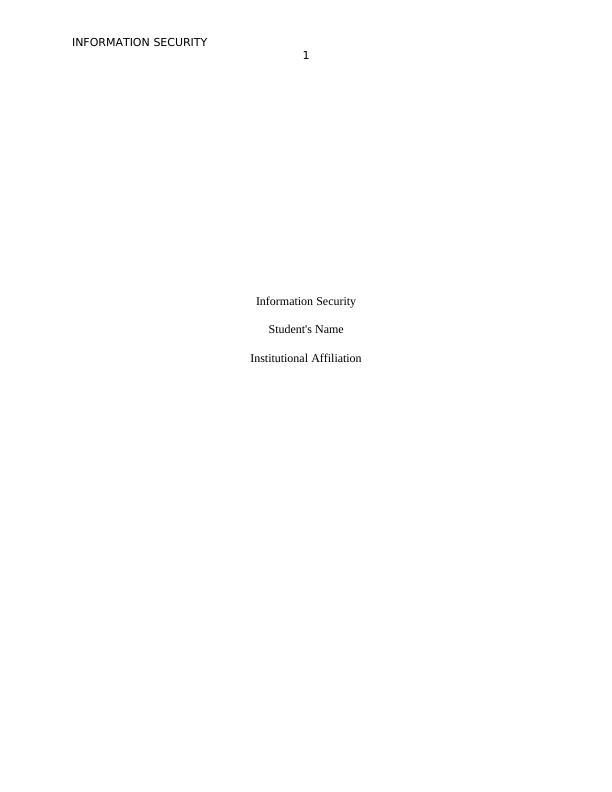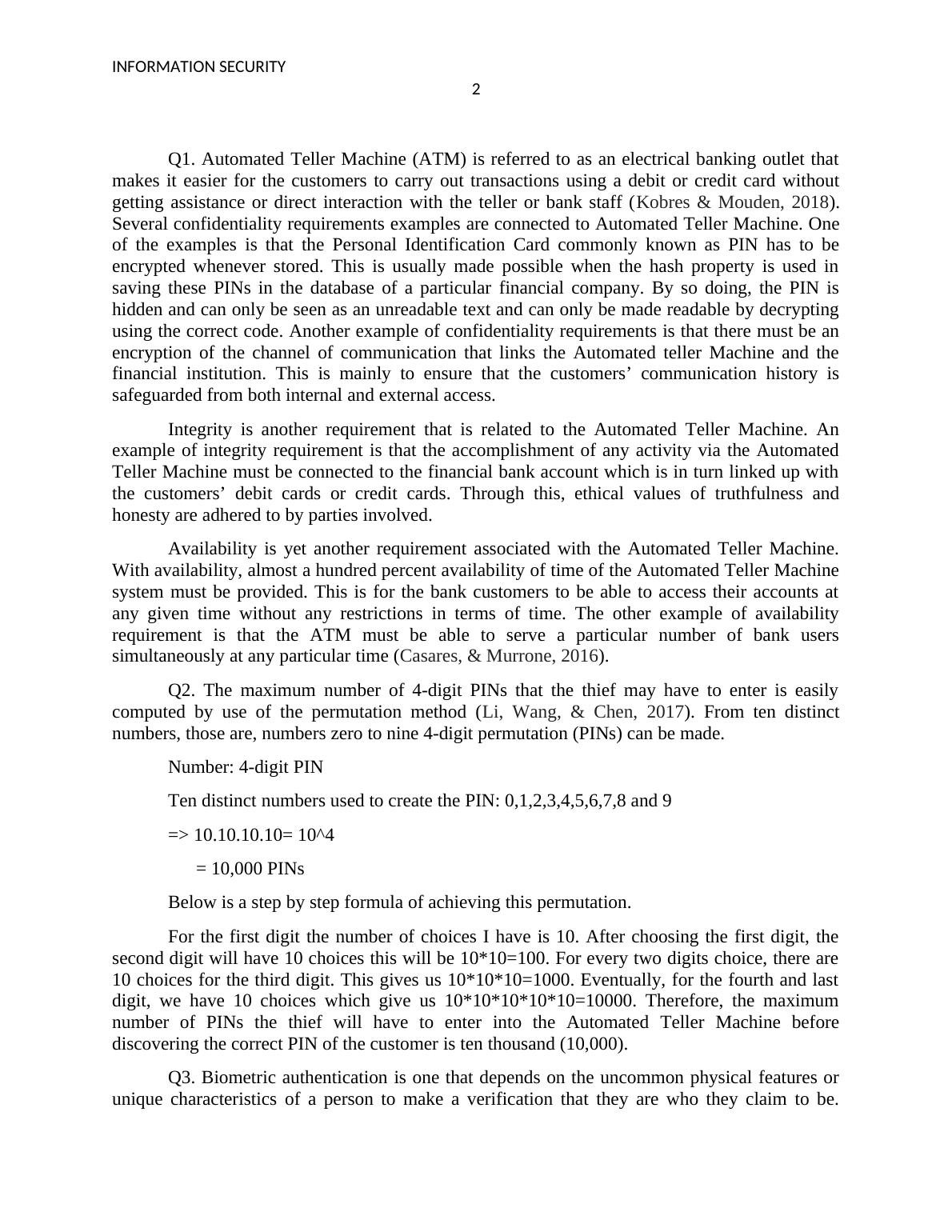Information Security Questions 2022
Added on 2022-09-17
5 Pages2158 Words34 Views
End of preview
Want to access all the pages? Upload your documents or become a member.
Security Fundamental
|6
|1721
|52
ATM & Cyber-Security
|10
|3344
|141
Information Security for ATM, Biometric Sensors and Cipher
|10
|2100
|403
Information Security: Examples of Confidentiality, Integrity and Availability Requirements Associated with ATM Machines
|6
|1854
|399
Information Security: ATM Requirements, Biometric Authentication, Encryption Methods
|10
|1864
|148
Info Security
|8
|1776
|71


